George Washington was born on February 11, 1732 using the calendar of his day. The date of birth of George Washington is now shown as February 22. Contemporary records, which used the Julian calendar and the Annunciation Style of enumerating years, recorded his birth as February 11, 1731. The provisions of the British Calendar (New Style) Act 1750, implemented in 1752, altered the official British dating method to the Gregorian calendar with the start of the year on January 1 (it had been March 25). These changes resulted in dates being moved forward 11 days, and for those between January 1 and March 25, an advance of one year.
He was not a rich conservative British oriented aristocrat. He was never poor in his youth and young manhood but was on the 2nd tier in society in Virginia. He never traveled to Europe or England. He was a surveyor of the wilderness at an early age (18). He felt that the wilderness was an important part of the American dream. He fought indians, French and British. The wilderness was such an important part of his life. It helped shape him in many ways that influenced the growth of the country. His education was limited. He only had little more than an elementary education. He didn’t have wooden teeth.
The Washington Coat of Arms from Medieval England
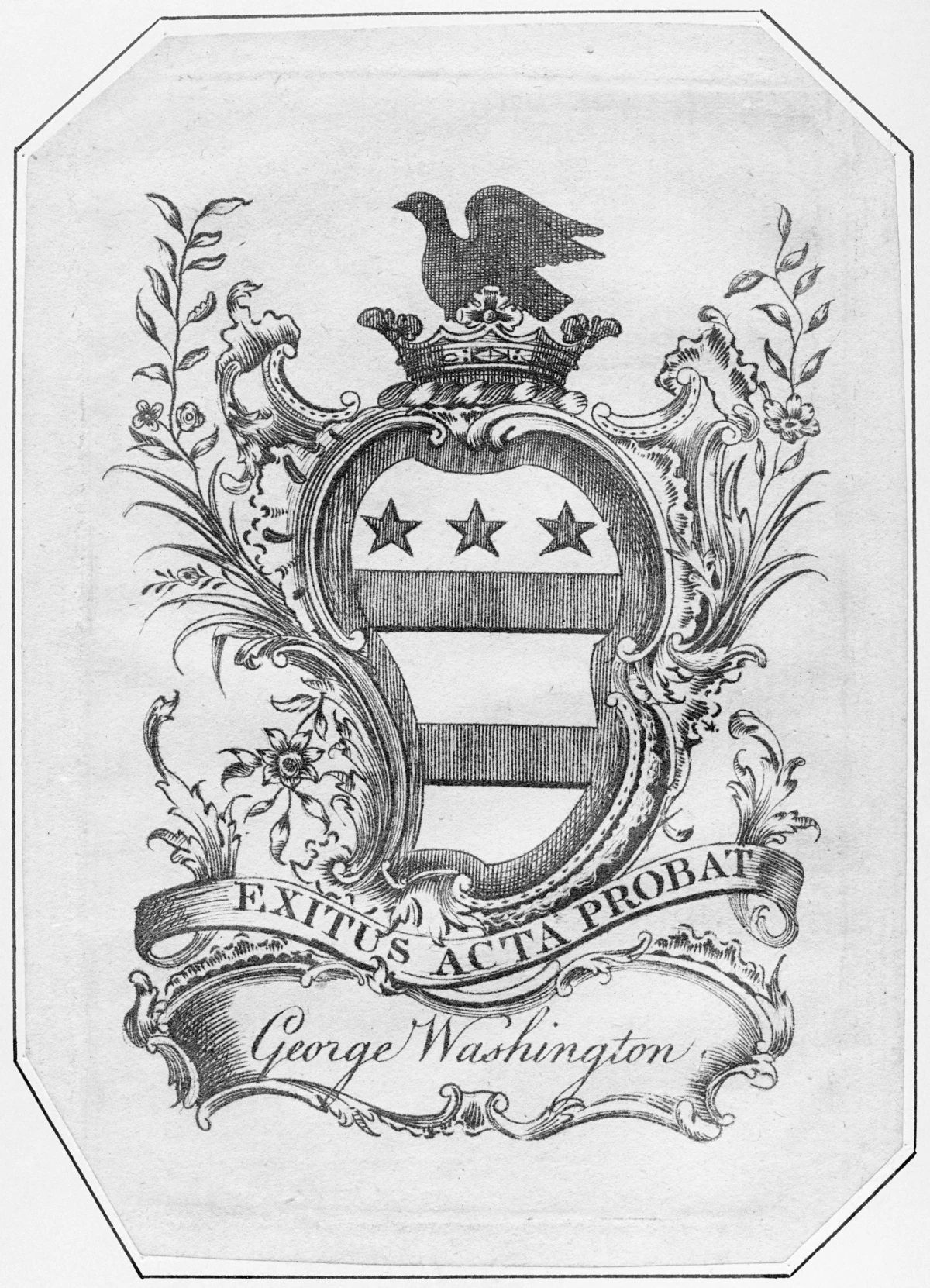
Washington’s American Genealogy
John Washington was a distant relative who traveled and settled down in Virginia in 1675. He was the opposite of a “hero” even though he was a justice of the peace at one point. He had married 3 times. The Washington’s were not considered a wealthy family. They were not invited to the “kings Council” but married some of the family members that were. George’s father, Augustine, was often in law court. He was married twice. His first wife had 2 sons and his 2nd wife had 5 children with George being the oldest.
George lived in a small house 40 miles downstream from Mount Vernon, his second residence. When he was 6 he moved to the Ferry Farm in Fredericksburg across the Rappahannock river.
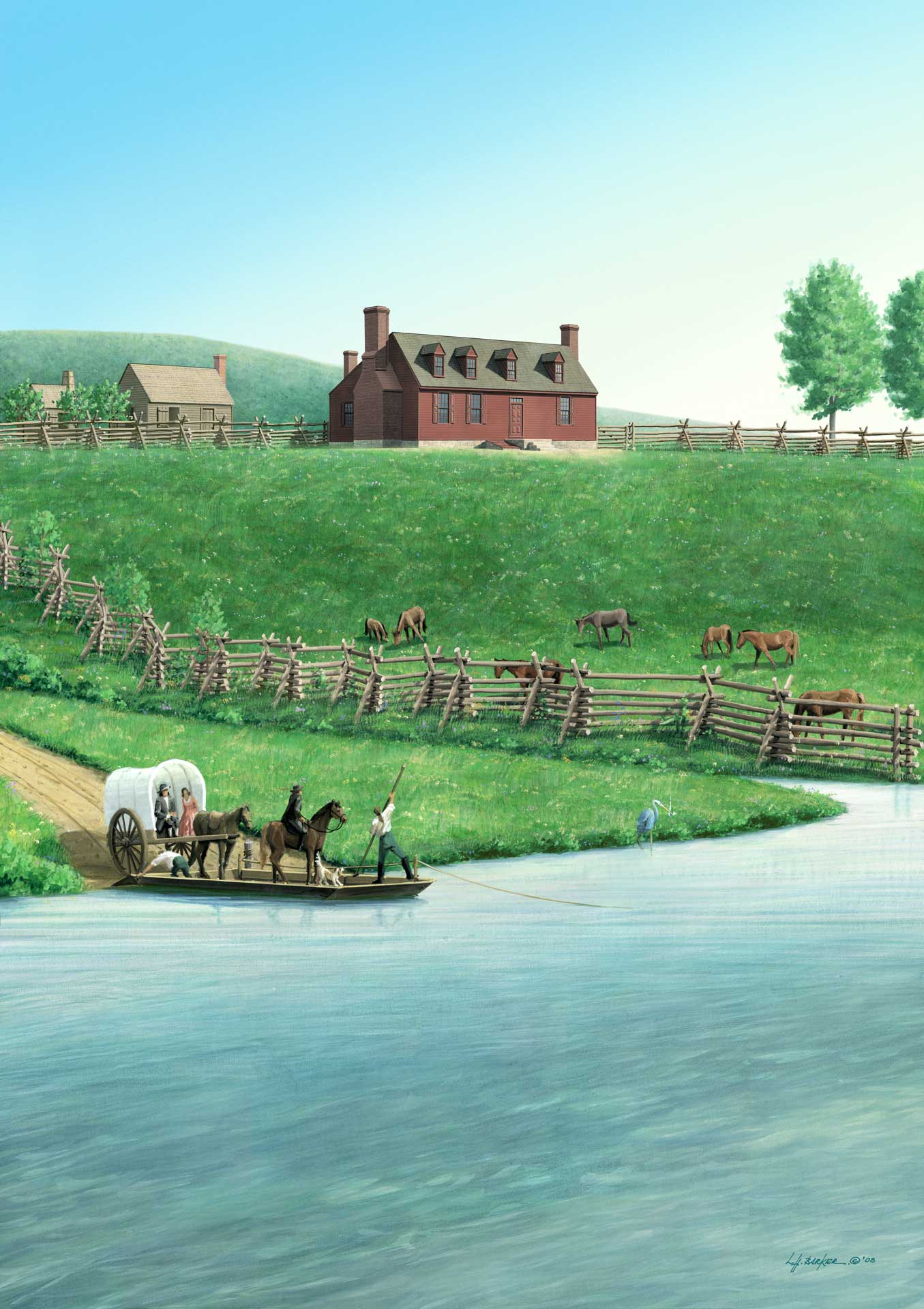
His father, Augustine, owned 20 slaves. George grew up in rural Virginia. Many transatlantic ships used the river. Occasionally travelers stayed in his home. His Father and 2 older brothers were educated in England. When George was 11 his father died. He was hoping to go to England to study as his father and 2 brothers did, but this was now impossible.
His 2 half brothers inherited most of the property but the Ferry Farm would eventually come to him, with his mother in charge. His mother was an orphan that became very independent and strict. She married Augustine at 25. She made George her project. She wanted him to take care of her and the family as if he were the head of the house. She usually was opposed to his occupations, even in the White House. She went out of her way to stop his military interests. His brother, Lawrence, became an officer in an American regiment. George admired this kind of life and wished it for himself.
George Washington’s beloved half brother Lawrence
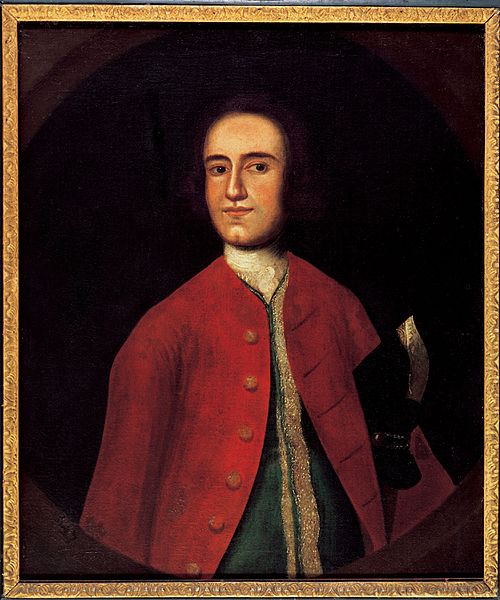
His brother served in the British regular army for an expedition against the Spanish West Indian stronghold of Cartagena. When his brother returned George found out how the British regulars looked down on the American regiment. Lawrence named the farm house “Mount Vernon” in tribute to Admiral Edward Vernon who had commanded the Cartagena expedition.
The Fairfax Connection
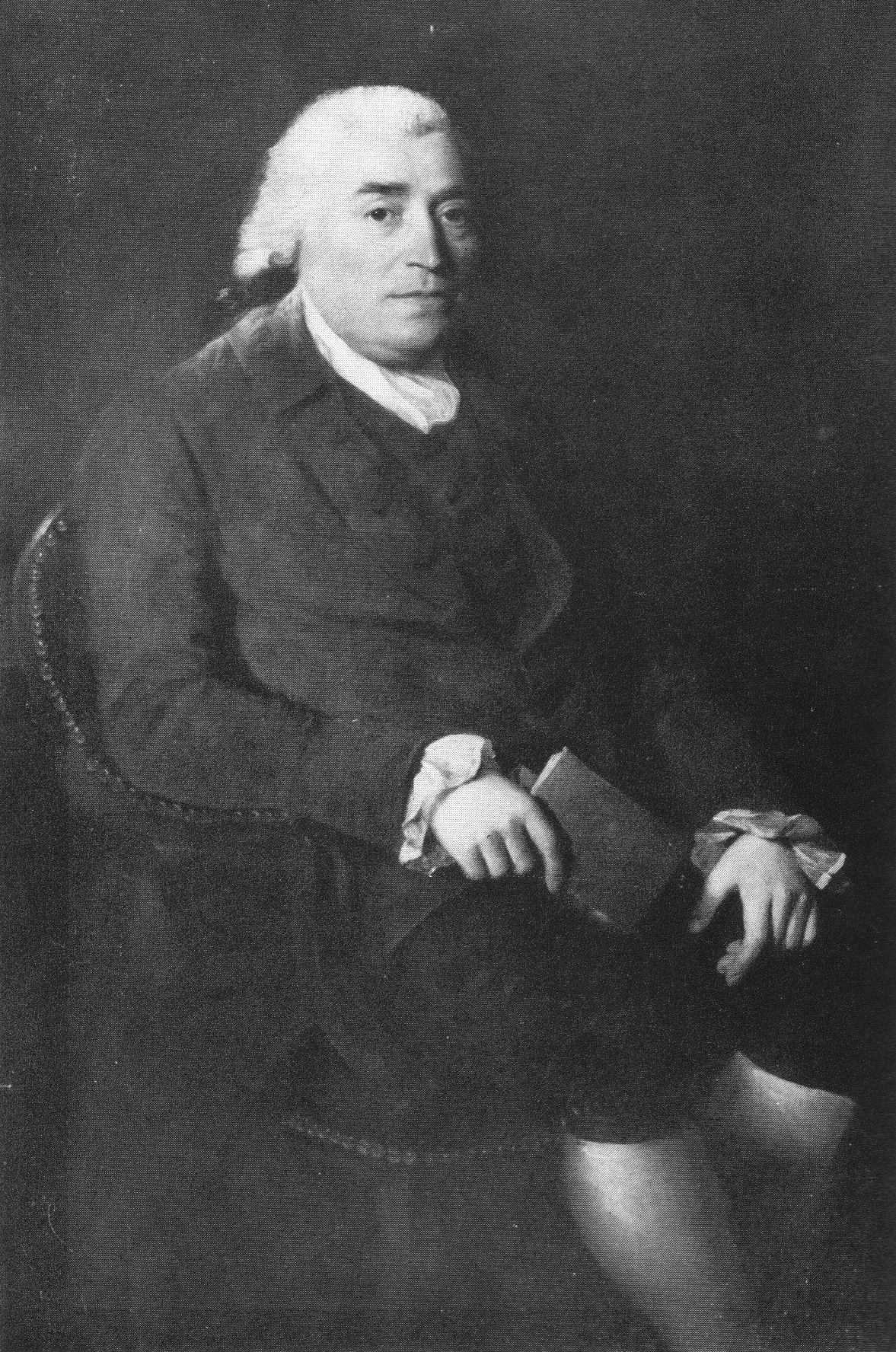
The mansion called “Belvoir” was close by. It was the home of the great English Fairfax family that was given a royal grant. Lord Fairfax owned a large portion of the colony which the Virginians were continually protesting. George regularly visited the Fairfax clan. At Belvoir George saw how the English upper class lived. William Fairfax was the insignificant son of an insignificant son. He needed the English Fairfax’s to use their influence to keep his employment in ways suited to his station.
Lawrence married into the Fairfax clan. This gave George opportunities for years to come. William Fairfax was the master of Belvoir and the cousin of the Lordship. George was very popular with the Fairfax clan. His riding skills and fox hunting skills were very helpful to riding to hounds which was a Fairfax pastime. The Fairfax connection could have elevated George in the British Army but his mother was against it.
At age 16
When the Lordship visited Belvoir he was “taken” by George Washington. George at 16 went along with a surveying party that was to layout out the Fairfax land on the frontier over the Blue Ridge in the Shenandoah Vally.
He became a surveyor at age 18. He purchased land that same year.
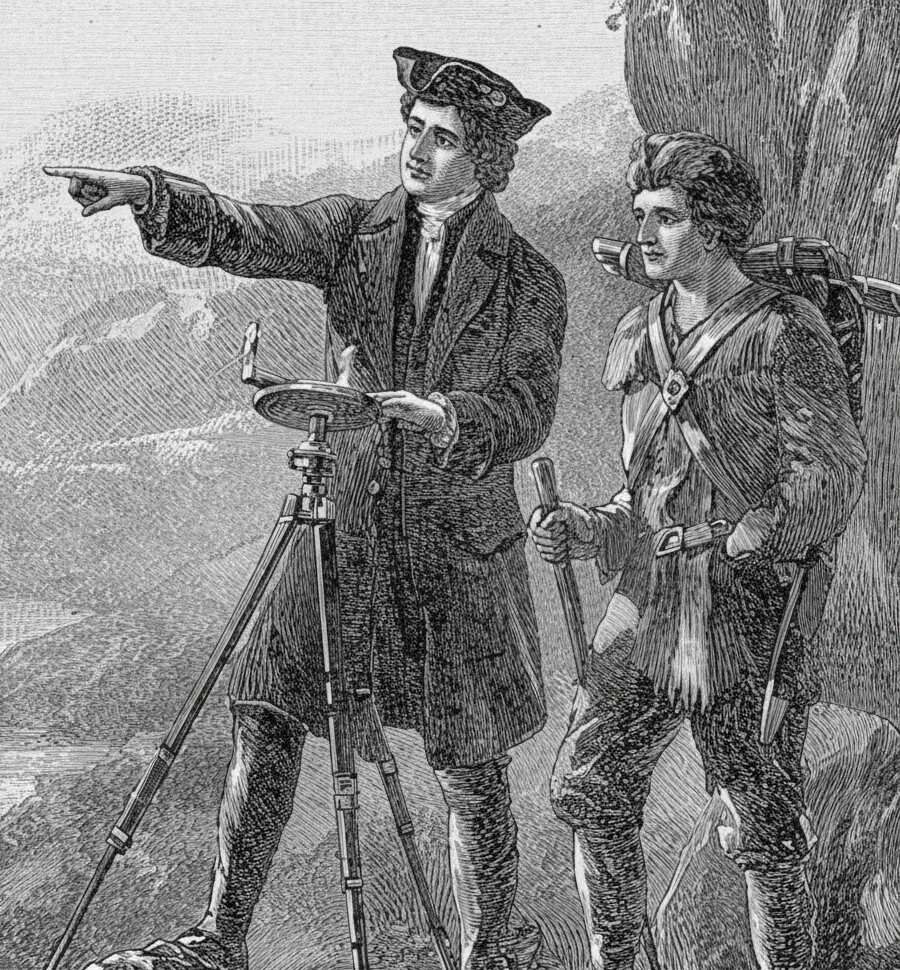
George lost his brother Lawrence to virulent tuberculosis. George came down with smallpox but survived it. This would give him an immunity for the years later when this took many lives during the Revolutionary War. George applied to the volunteer Virginia militia company which Lawrence was the Adjutant General. He was given the rank of major at the age of twenty. His responsibility was to train the militia.
Between 1753 and 1754 England was in a “Cold War” with France and many other countries trying to claim the new world as their property for colonization. The Ohio valley was up for grabs and France was going fully out to gain Canada and as much land as possible. The Ohio Valley was being claimed by both England and France. Lieutenant Governor Robert Dinwiddie was the highest resident crown office in Virginia. The French were coming down from the Great Lakes to claim the Virginia land.
The Forks of the Ohio (Pittsburgh)
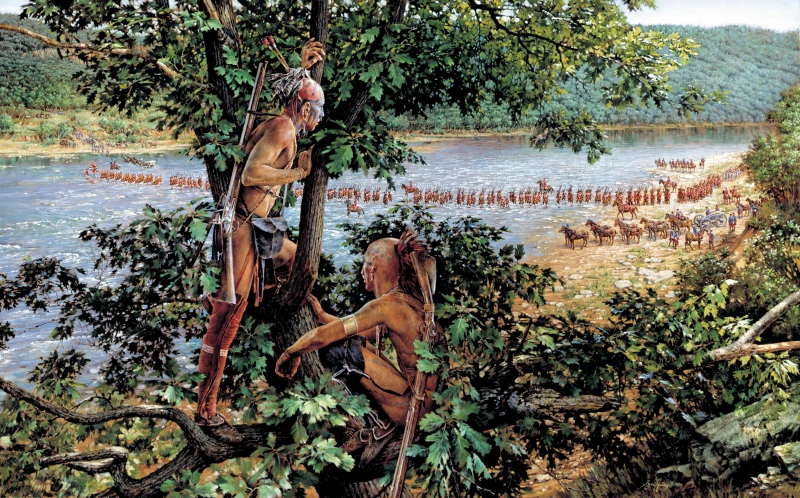
With winter soon to come a plan of action was given to George Washington since he knew much of these areas and had experience in the wilderness.
The British give Washington a few translators and a few woodsmen. Their mission was to see where the French were. George found the forks of the Ohio (now PitPittsburgh) was the strategic position that would control the region. George made an alliance with the Iroquois chief “Half-King” and 3 old chiefs that accompanied their party. They also provided an able-bodied hunter to supply the party with meat.
Washington visited numerous outposts and spoke to indians and French officials. George Washington gave the ultimatum of George II (the English King) at the French Fort to Legardeur de St. Pierre, Knight of the Military Order of St. Louis. George was wearing his dress uniform of a Virginia major. The old French officer didn’t care. Washington began his treck back home in mid-December. Conditions were terrible.
Washington hired an indian guide to help them but within a few hours of traveling the indian turned on them and fired at point blank range to try and kill Washington. He missed. Before he could reload he was subdued and later released. Things couldn’t get much worse.
A Close Call
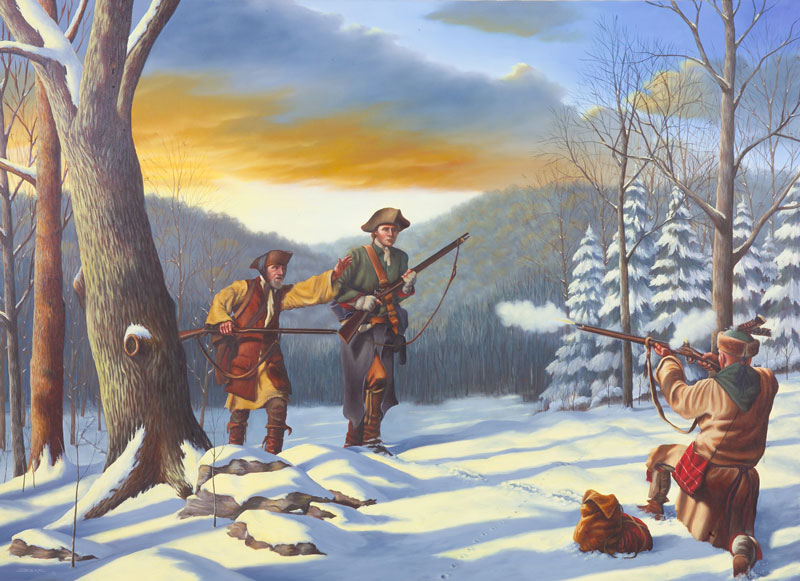
The word got back to Dinwiddie who wanted Washington to stay in the wilderness a little longer. He would send troops to build a small fort/outpost. George was now the commander of 300 men. They built a tiny semi-fort/outpost called Washington’s Fort but later names Fort Necessity. It was a poorly designed fort/outpost but later would save British/Virginian lives.